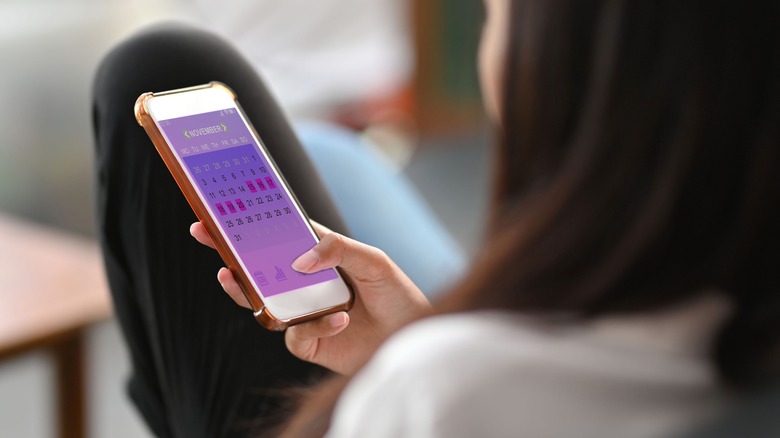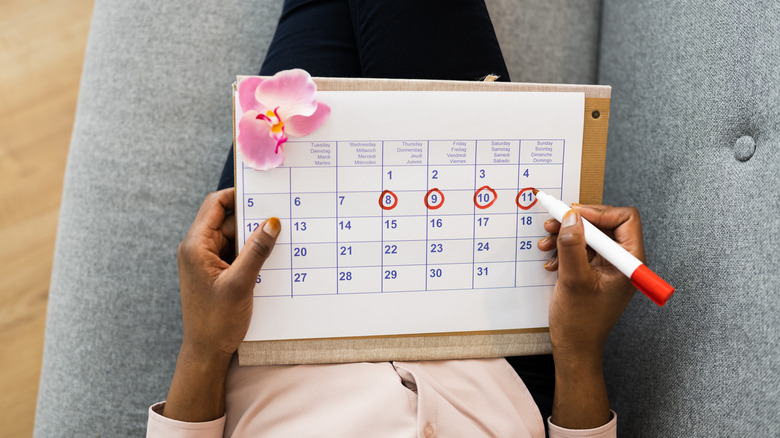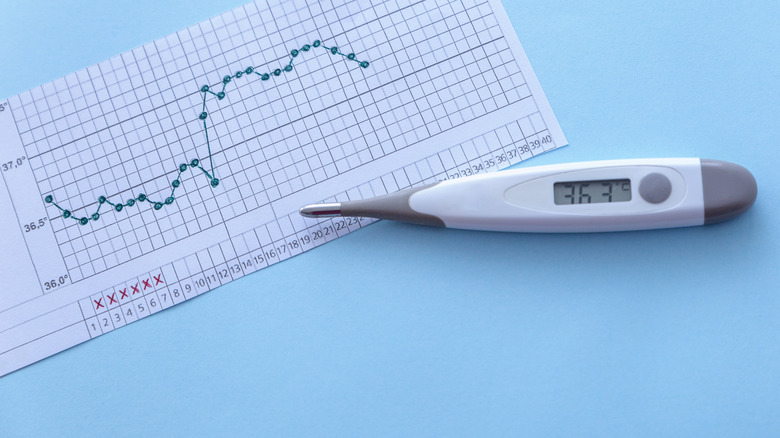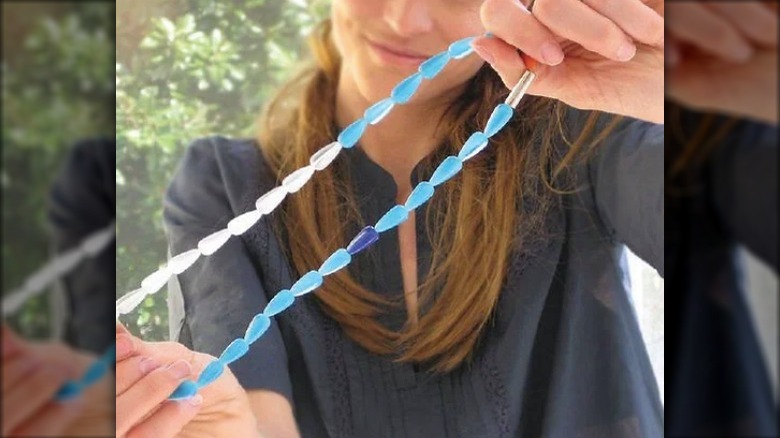Tech-Free Ways To Track Your Period And Be More In Tune With Your Body
With the unfortunate overturn of Roe vs. Wade, there have been discussions of how it will affect the digital privacy rights of period-tracking app users. Since many states have banned abortions, many residents of those states are worried their information will be handed over if there ever need to be cases built against them for trying to receive help from reproductive services. Many folks have confided in period-tracking apps to give them good knowledge about their period, like what phase they're currently in during their menstruation cycle and when they should be expecting their period.
An average menstruation cycle lasts up to 28 days, but it can be between 21 to 35 days, depending on how long you menstruate. Your cycle is divided into four phases, starting with the first day you start your period, then your follicular phase, ovulation, and ending with your luteal stage.
Now that abortions have been banned in various states, people with uteruses have learned to track their menstruation cycle without an app. While it's a great way to focus and be in tune with your body, without the proper tracking and knowledge could lead to unexpected pregnancies, especially if your period changes. If you've been thinking about deleting your period-tracking app but don't know other strategies to track your cycle, here are a few ways to do so without an app.
Use a calendar
A calendar is an authentic way of tracking your period that's been used for decades. It's vital to learn about the menstruation cycle ahead of time and log the information from your app to keep everything accurate. If you have a regular period, you'll be able to consistently track your period the same way your app would without any complications. However, if you have an irregular period, you'll need to keep track of your period days for at least six months before using a calendar as a form of birth control where you'll be able to know your fertile window.
To figure out said window, you'll do some math every month — unless you have a regular period. This window usually lasts five days, but it's crucial to note that if you have unprotected sex before your ovulation stage, sperm can stay in the body for up to five days. Therefore, there can be a chance you can get pregnant during your ovulation phase even if you have protected sex from previous unprotected sex. Writing down your symptoms, blood flow, and when you have sex on your calendar is essential to keeping track of your cycle and preventing a crossover that could lead to a pregnancy. On the other hand, it helps to know when you're fertile so that if you want to get pregnant, you'll know when to engage in intercourse.
Use a basal body temperature
If you forget to take notes on your calendar during your menstruation cycle, then the basal body temperature method is another excellent way to keep track of your period. This method requires you to check your temperature first thing in the morning before engaging in any activity, such as using the bathroom or your phone. Your body basal temperature is best for natural family planning and is your temperature when you're body is completely resting (via Mayo Clinic). When you enter your ovulation stage, your temperature will increase slightly. However, you'll be fertile a few days before your temperature rises.
By taking your basal body temperature every morning, you'll be able to know when you're ovulating and decide whether you're going to have protected or unprotected sex. While taking your temperature every day may sound simple, you must be consistent and do it the moment you wake up to get accurate results. You can track your temperature on a chart to see when it starts to change. If you plan to use a body basal temperature chart as a form of contraception, you have to be consistent with the method for three months before it can become reliable.
Use CycleBeads
The CycleBeads method is possibly the easiest way to track your period, and it's effective for preventing and planning pregnancies without any side effects. It's considered the Standard Days Method, where you use a rosary-like beaded bracelet with different colored beads to indicate each phase of your cycle. According to CycleBeads, you'll start on the first red bead, the first day of your period, and each day move a ring or bead clockwise as the month continues until you start over. White beads indicate your ovulation stage, where you'll decide to have protected or unprotected sex. Blue beads represent the days you're highly unlikely to get pregnant.
The Standard Days method benefits those with a cycle from 26 to 32 days. If it's less than 26 days, it'll be harder to track using the bracelet. CycleBeads claims it's been clinically proven that this method is more than 95% effective at preventing pregnancy when used correctly. For the first month, you'll want to use a backup form of birth control until you get comfortable and consistent using the bracelet.
Use a spreadsheet
If you enjoy something more creative and have a favorite app, you don't want to let go of; you can re-create it in a spreadsheet. It takes some time and some math, but it's doable. You will need a list of dates and categories representing each phase in your menstruation cycle. Having past information on hand before deleting your will help you determine how long your period lasts and determine your ovulation window. It's very similar to using a calendar, but through specific templates, you can send reminders of when you'll get your period or begin ovulating. In addition, you'll be able to record period symptoms and blood flow.
Different templates are available online for you to use, or you can make your own and design it to fit your needs. Like the other methods we've discussed, you'll want to have a backup form of contraception to use until you get familiar with your spreadsheet. It'll take time, patience, and consistency. However, the more you listen to your body and its needs, the more you'll be in tune with it, making tracking your period more manageable.




